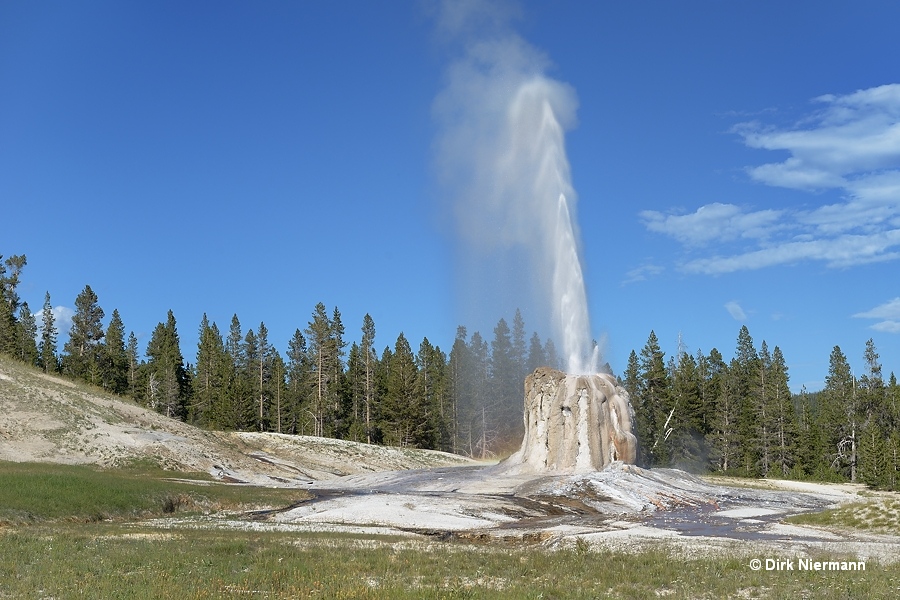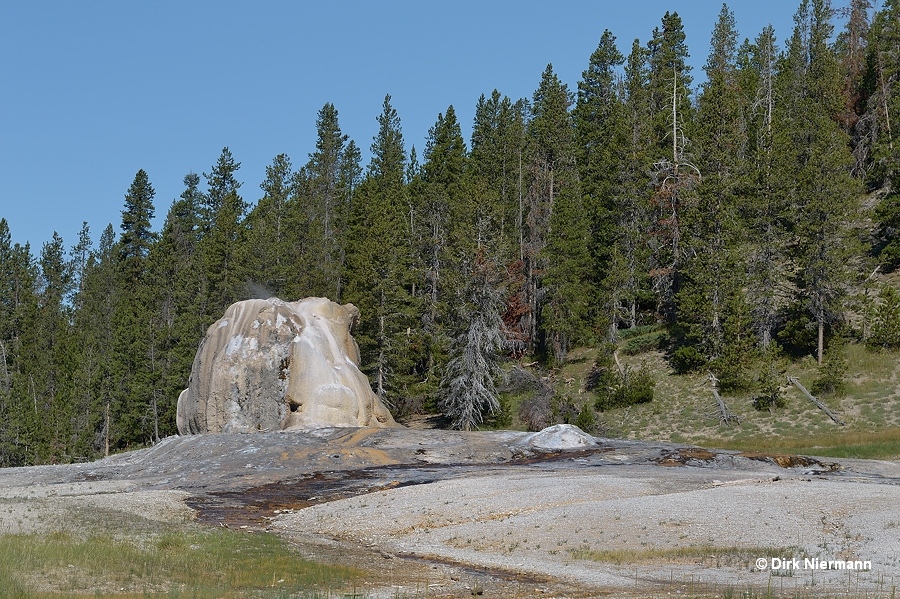Lone Star Geyser Basin, Lone Star Group
The name "Lone Star Geyser", coined by Colonel W. D. Pickett and J.M.V. Cochran in 1879, hits the nail on the head. Lone Star Geyser is well separated from other important geysers and indeed a kind of star: It is more reliable than Old Faithful and features one of the most impressive sinter cones worldwide. However, the 2.7 m (9 feet) tall cone may raise expectations, which can not be completely met by the at most 14 m (45 feet) high water jet from the main vent. And most eruptions do not come anywhere near that size. Usually one, two, or even three minor eruptions preceed a final major eruption. The minors may reach the same height as the major, but are lasting only five minutes, while the major plays up to 30 minutes including a steam phase near the end. The remarkably regular interval between major eruptions is about three hours. Dormancies have never been observed. On top of the cone there are also several minor vents (see small, diverging water jets in photo), called "The Pepperbox".

Besides Lone Star Geyser two further geysers are present in this group. Both are located only a few feet east of Lone Star's cone. Black Hole Geyser is a funnel in the sinter mound and almost impossible to spot from legal observation points if not erupting. Intervals vary between minutes and hours. In contrast, the punctured cone of Perforated Cone Geyser can easily be seen. Unfortunately, eruptions are rare and rather unimpressive.
